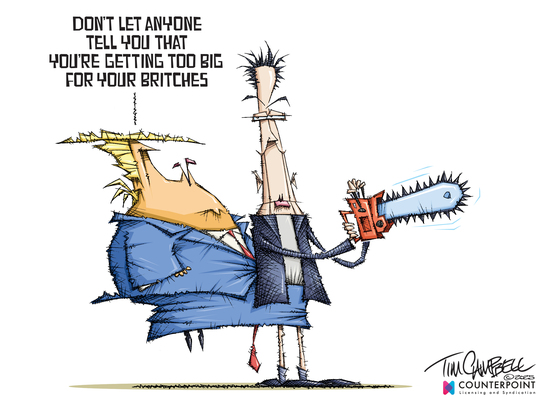Finally, the moment we’ve all been waiting for: The Government Accountability Office’s annual report on reducing overlap, fragmentation, and duplication has been released!
In normal times, this would not be something most people would even notice, much less get hyped about. But in Trump’s America, a run-of-the-mill report from an independent, nonpartisan agency feels momentous, like some tiny part of the government remains untouched by the rampages of Elon Musk’s ostensible Department of Government Efficiency.
It’s also wild that this particular report escaped containment and is just out there in the world, since it’s literally a review of Congress and federal agencies “to improve efficiency and effectiveness of government.”
It’s also an actual report, running 145 pages with figures, tables, methodologies, and how cost savings are determined, and it boasts 148 matters and recommendations across 43 topic areas.
Now contrast this report with the dumb DOGE dashboard, an ever-updating webpage with very few details on how savings were calculated or even what, exactly, was axed. It’s nothing like the staid, yet useful, GAO report, which details each efficiency and savings suggestion at length.

Neither Trump nor Musk would ever find this sort of report appealing, which is probably why it got past them. The recommendations here are for actual, tangible, boring things, rather than fantastical ideas like “let’s illegally close dozens of agencies by pretending there’s fraud.”
The GAO’s recommendations are more like, “The Space Development Agency should fully demonstrate its space-based laser communications technology in each iterative development phase before progressing, potentially saving hundreds of millions of dollars over 10 years.”
Or the suggestion that the Department of the Interior “improve its compliance activities to verify federal oil and gas royalties, potentially increasing collections by tens of millions of dollars per year.”
Those are the sort of things people actually want in a government efficiency report.
So what do all of these recommendations add up to? If we were to adopt just one year’s worth of its suggestions, the GAO report estimates that the financial benefits could be $100 billion or more, and government services would improve.
Contrast this with DOGE’s fake savings. First, Musk promised that he would save the federal government $2 trillion. Then that became $1 trillion. Then it dropped to $150 billion. And while the dumb DOGE dashboard currently says it has saved $170 billion, that is likely inflated as a result of DOGE’s lack of transparency and shoddy math.
DOGE has counted savings from the same contract multiple times, and several of its listings on its “Wall of Receipts” are actually $0 each. Only $70 billion of the alleged savings are itemized.
So, one year of GAO suggestions could save $100 billion without annihilating critical federal government agencies, while DOGE’s slash-and-burn mass firings, agency closings, and funding freezes have resulted in, theoretically, $170 billion. That doesn’t really seem like a great bargain, given how much of the government has been destroyed by DOGE.
Even if we pretend that DOGE did manage to save $170 billion, there’s still another problem: Government spending is increasing. The government has spent $166 billion more than it did by this point last year, increasing the deficit by $196 billion.
There’s no real doubt that most, if not all, of GAO’s expert recommendations will be disregarded by the Trump administration in favor of letting DOGE continue to do whatever it wants. Why let a perfectly good government agency do its job when DOGE could just send over some unqualified racist to “fix” things?
Just look at the forced closure of the General Services Administration’s technology team, 18F, which existed to create open-source tools to improve IT and digital services for the federal government. The Trump administration has decided that, somehow, getting rid of the existing technology team will help the government “embrace best-in-class technologies to accelerate digital transformation and modernize IT infrastructure.”
The Trump administration ostensibly wanted better digital services and IT infrastructure so it … closed the agency that did exactly that.
Weird that we needed a whole new faux agency to find inefficiencies when we already had perfectly good ones already doing it. But, of course, DOGE’s mission was never about actual efficiency. It’s about having permission to tear the copper out of the walls and sell it for scrap.
And that, unlike finding federal inefficiencies, is something DOGE is very, very good at.
